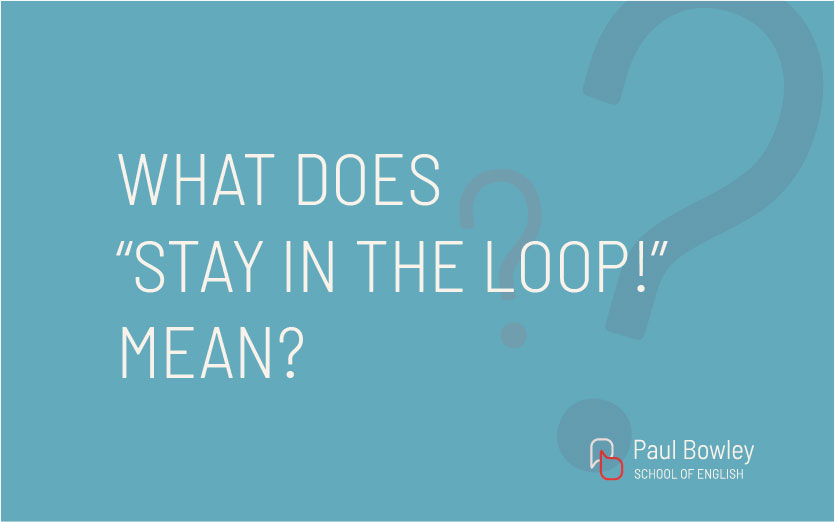
“Stay in the loop!” è il nome del blog della Paul Bowley School nonché il nuovo slogan aziendale lanciato nell’autunno 2020.
In questo articolo che inaugura il progetto, Paul Bowley spiega il significato dell’espressione con esempi pratici e visivi, motivando l’importanza di seguire questo monito.
Buona lettura!
The expression “Stay in the loop!” means keep up to date with the things that are important for what you and your group do.
If you don’t “stay in the loop” then you don’t understand what’s happening and what people are saying.
It’s just like English. If you don’t speak or use English, which is the international language of the world, you won’t be able to follow what’s going on and you certainly won’t be able to be part of it!
“Stay in the loop!” is just a way of saying that English is vital to your participation in the modern world, whatever you do.
If you look up the definition of “loop”, you’ll find that it often refers to a shape you can make in a rope or a wire where there is “a curve that bends round and crosses itself”.
To understand this, maybe it’s easier to look at a picture:
You can see that the characteristic of a loop is the circular shape that is formed.
In aviation, a plane can perform a dramatic manoeuvre called “looping the loop” which refers to the path followed by the plane, just like the rope. Here’s another picture:

You can also find loops in fairgrounds! Have you ever tried something like this?
So the idea of a loop is always connected to something that’s circular and continuous – and it can often be something that’s moving.
In coding, the word “loop” is an instruction to continuously repeat a sequence, possibly until another factor appears which would “break the loop”.
In our expression “Stay in the loop!”, we’re metaphorically referring to what is contained inside our “dynamic circle”: it’s society, it’s business, it’s news, it’s gossip, it’s innovation, it’s everything that’s happening, it’s what – and who – you need to know.
By extension, we could say “Get in the loop!” or “Be in the loop!” – which means you need enter the “dynamic circle” that you’re not currently in.
And if we’re talking about a person who’s really up to date with everything that’s important and new in a particular group or company, we could say “He’s in the loop!”. Sometimes we need to make sure that someone is kept fully informed about a situation or a project. We can tell them “Make sure you keep (or stay) in the loop”.
If you’re reading this blog, then you already know some English.
If you want to improve, then you need to practise your English communication skills and enrich your vocabulary – in other words, you need to



